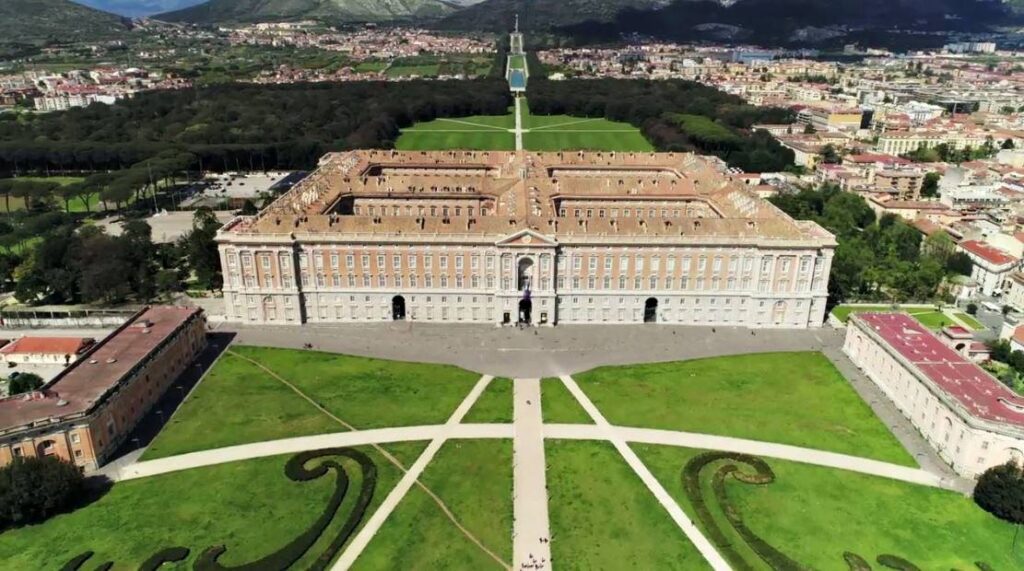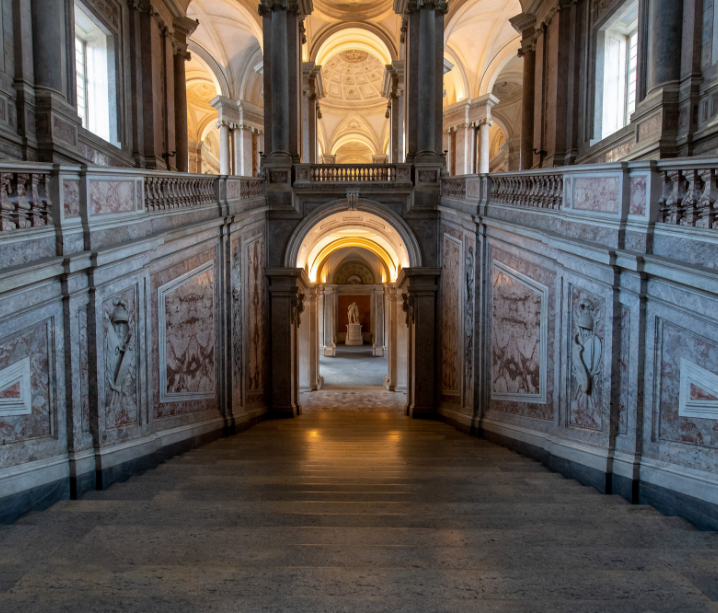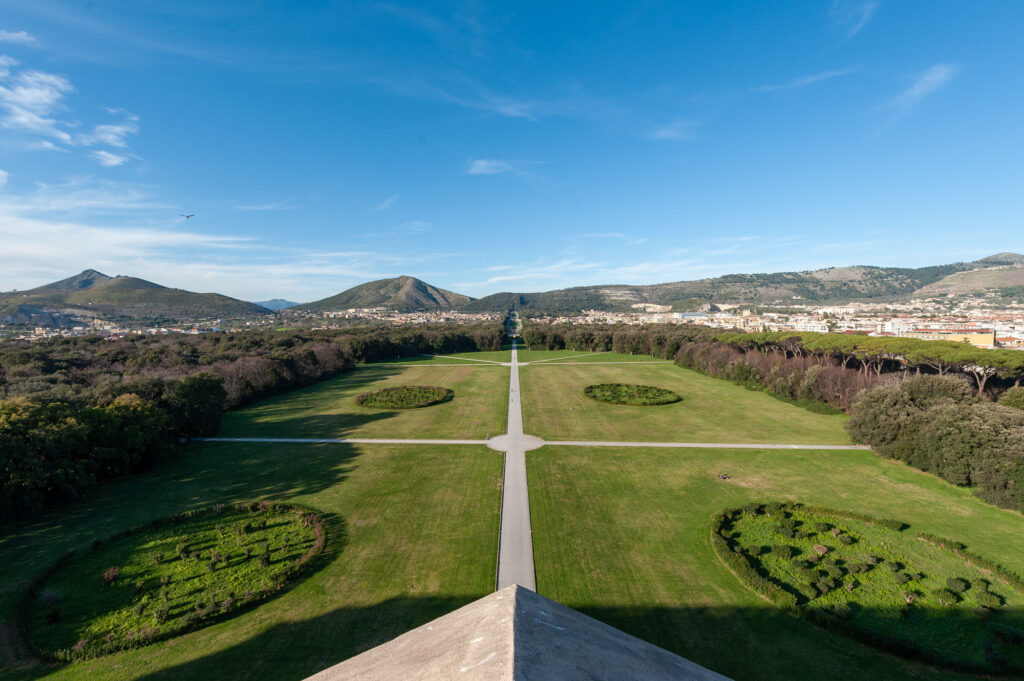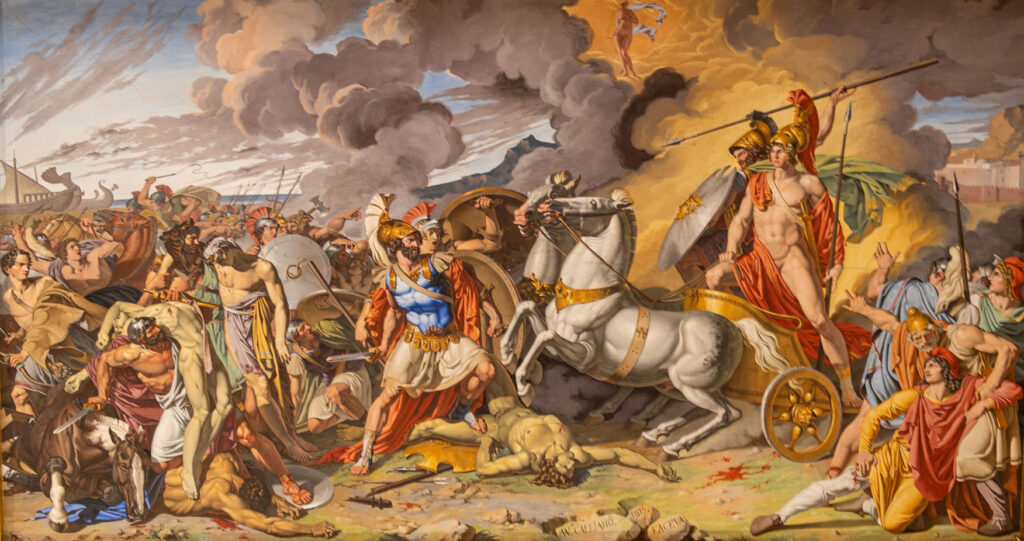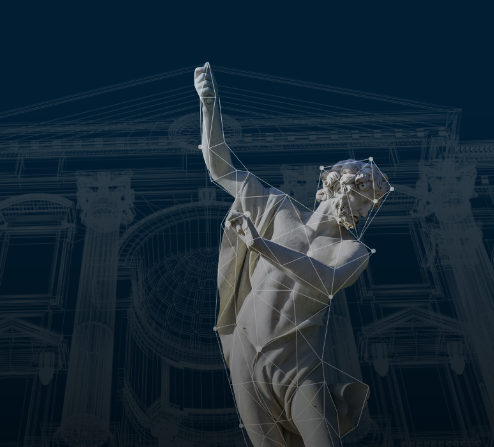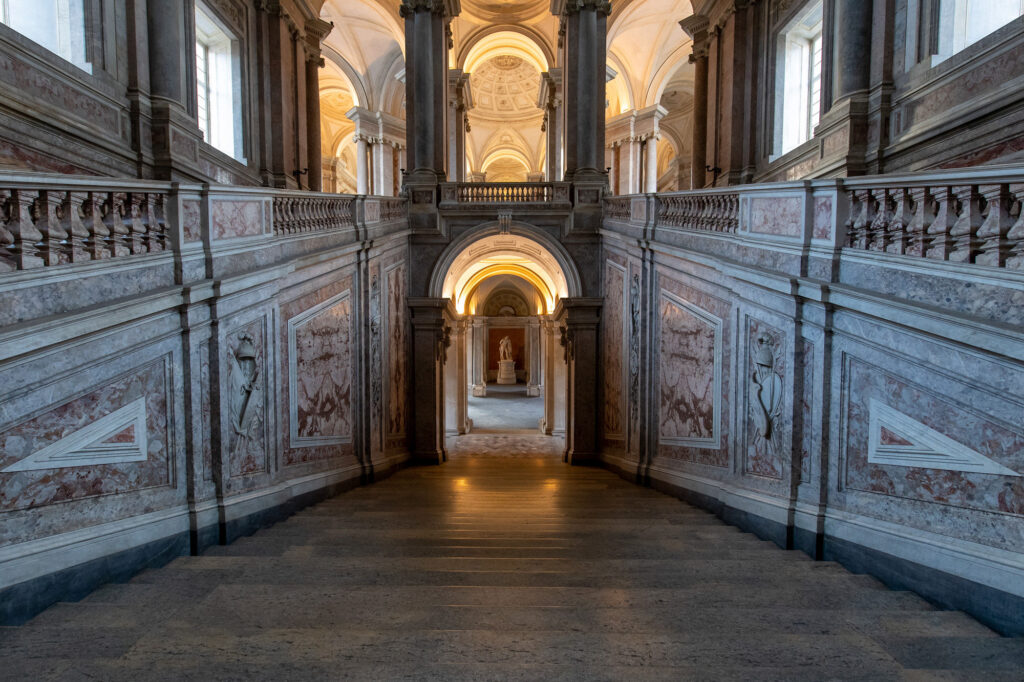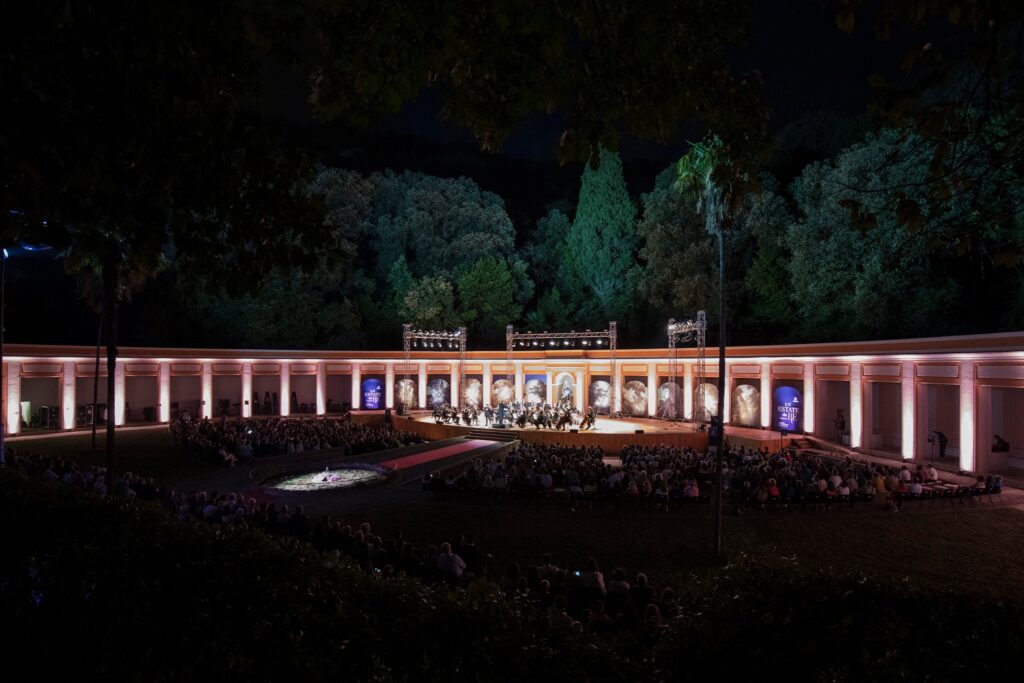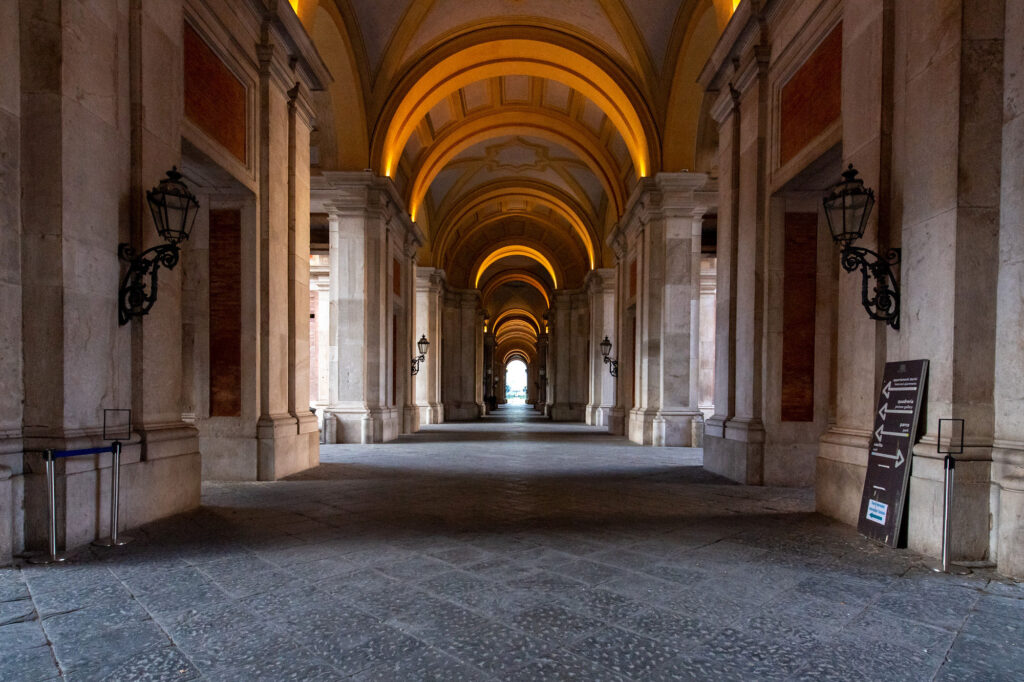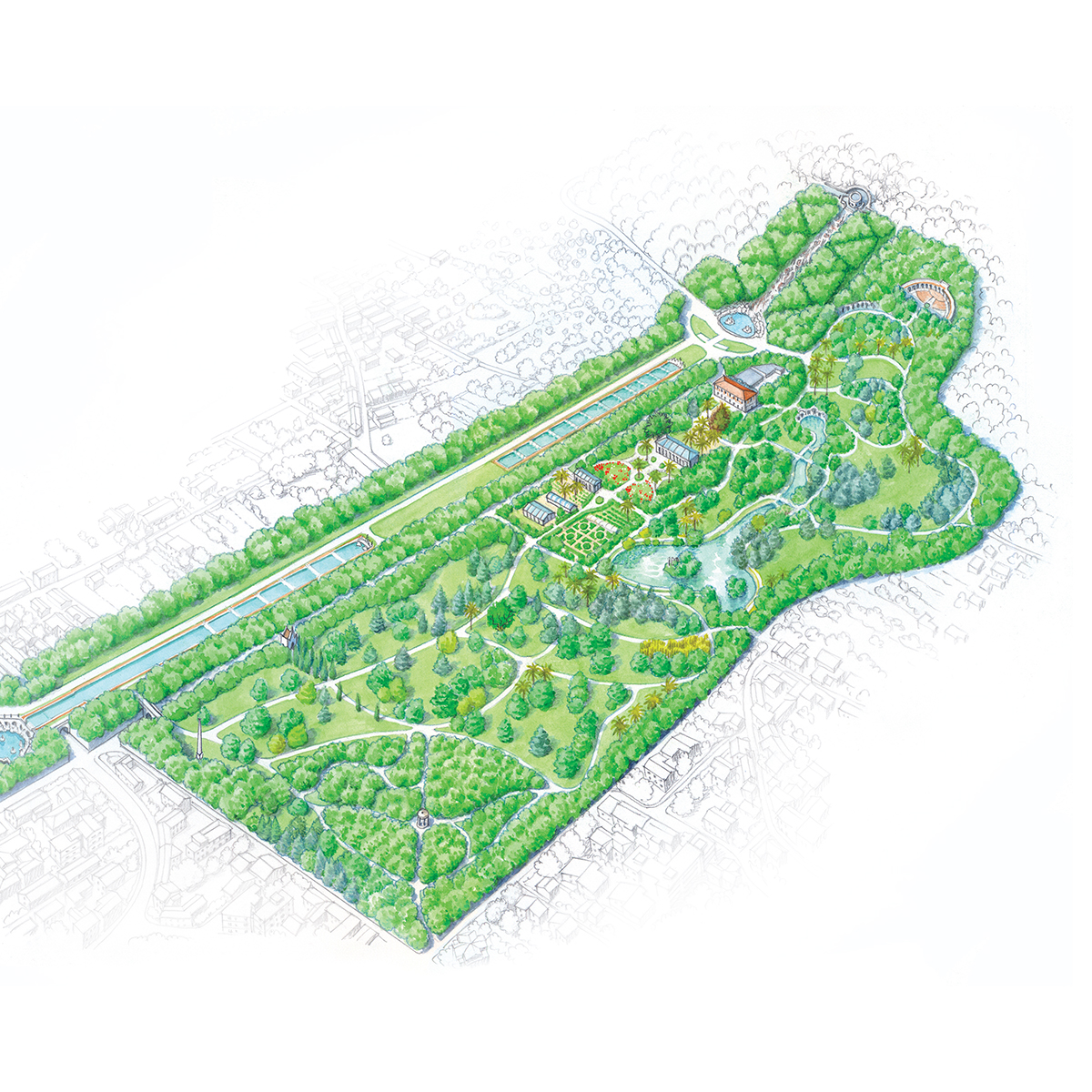A monumental fountain, without the God of the Winds
Built by Carlo Vanvitelli, based on his father Luigi’s project, the Fountain of Aeolus was supposed to have a total of 54 statues. The complex was to represent the god Aeolus in the act of unleashing the Winds against Aeneas and the Trojans at the behest of Juno, as narrated in the Aeneid. The construction began in 1779: only 29 statues were actually built. The Winds and Tritons ridden by Putti are arranged along a series of rocks. Aeolus was never built. Juno was not located on top of the waterfall so as not to hinder the perspective of the Via d’Acqua. There is a hidden cave behind the architectural background, a background with 15 openings. Four bas-reliefs made by Angelo Brunelli represent Jupiter and the Goddesses, The marriage of Teti and Peleus, The judgment of Paris and The wedding of Paris. A series of sculptures represent minor winds, the Zephyrs, alternating with pairs of slaves who support large shell-shaped vases on the balustrades

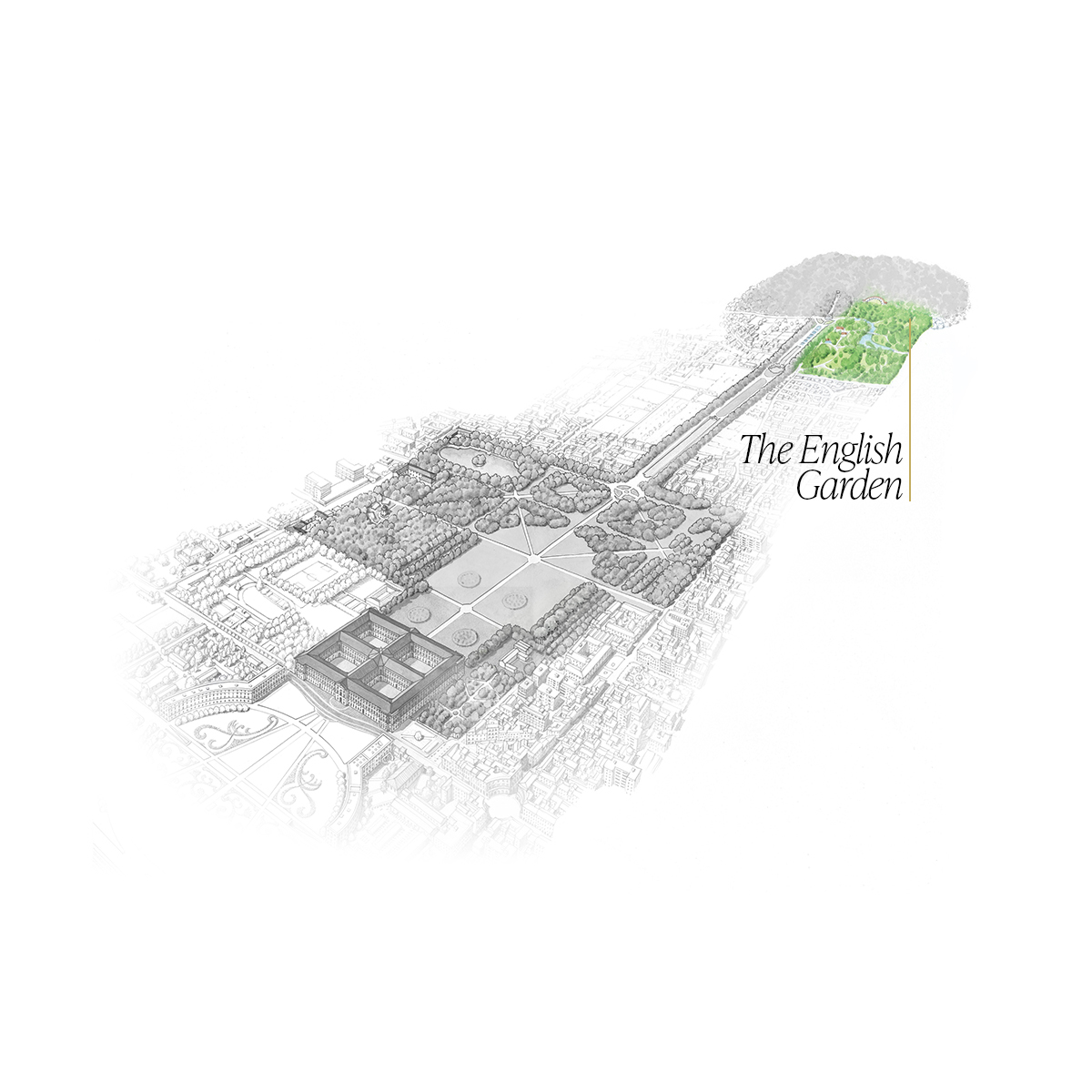
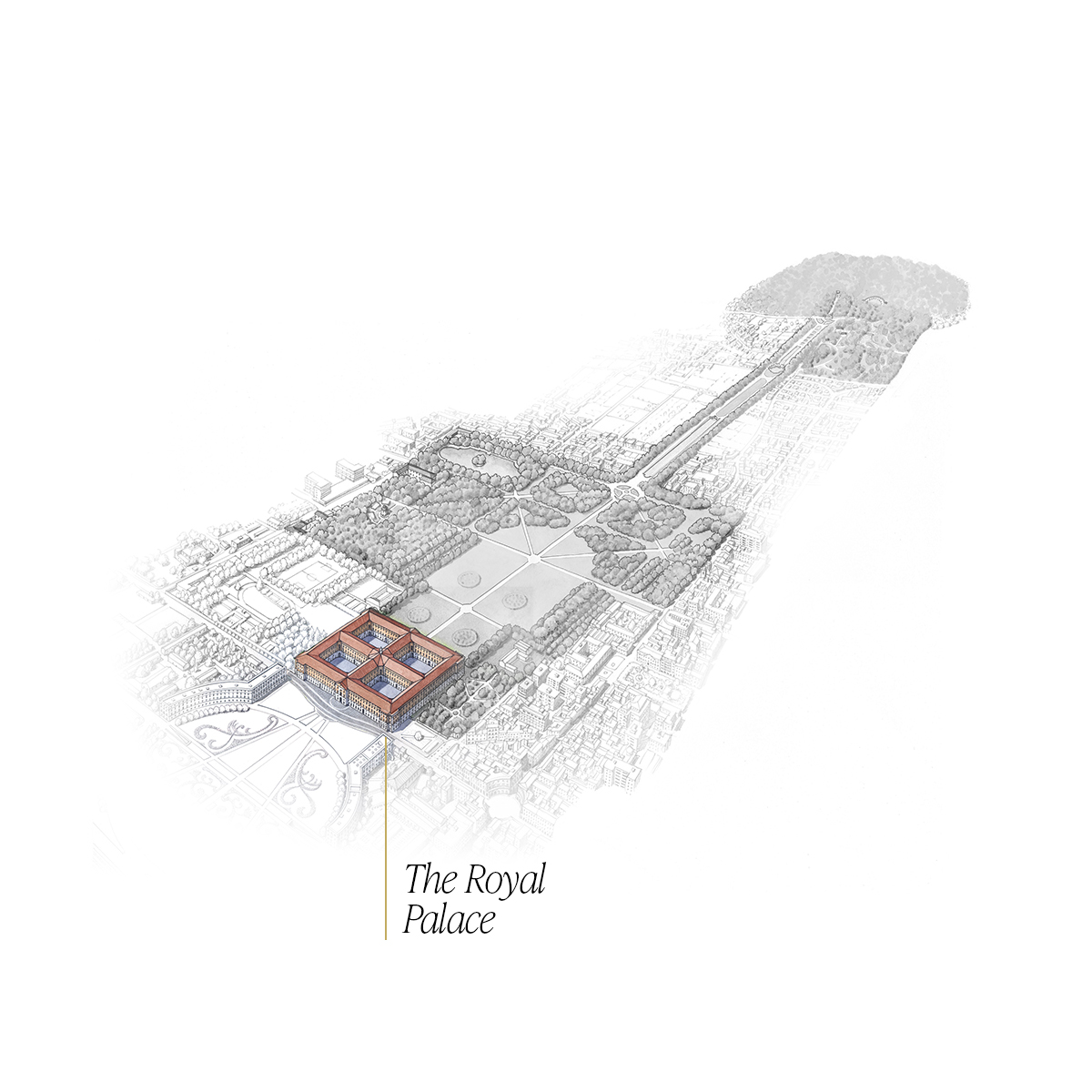
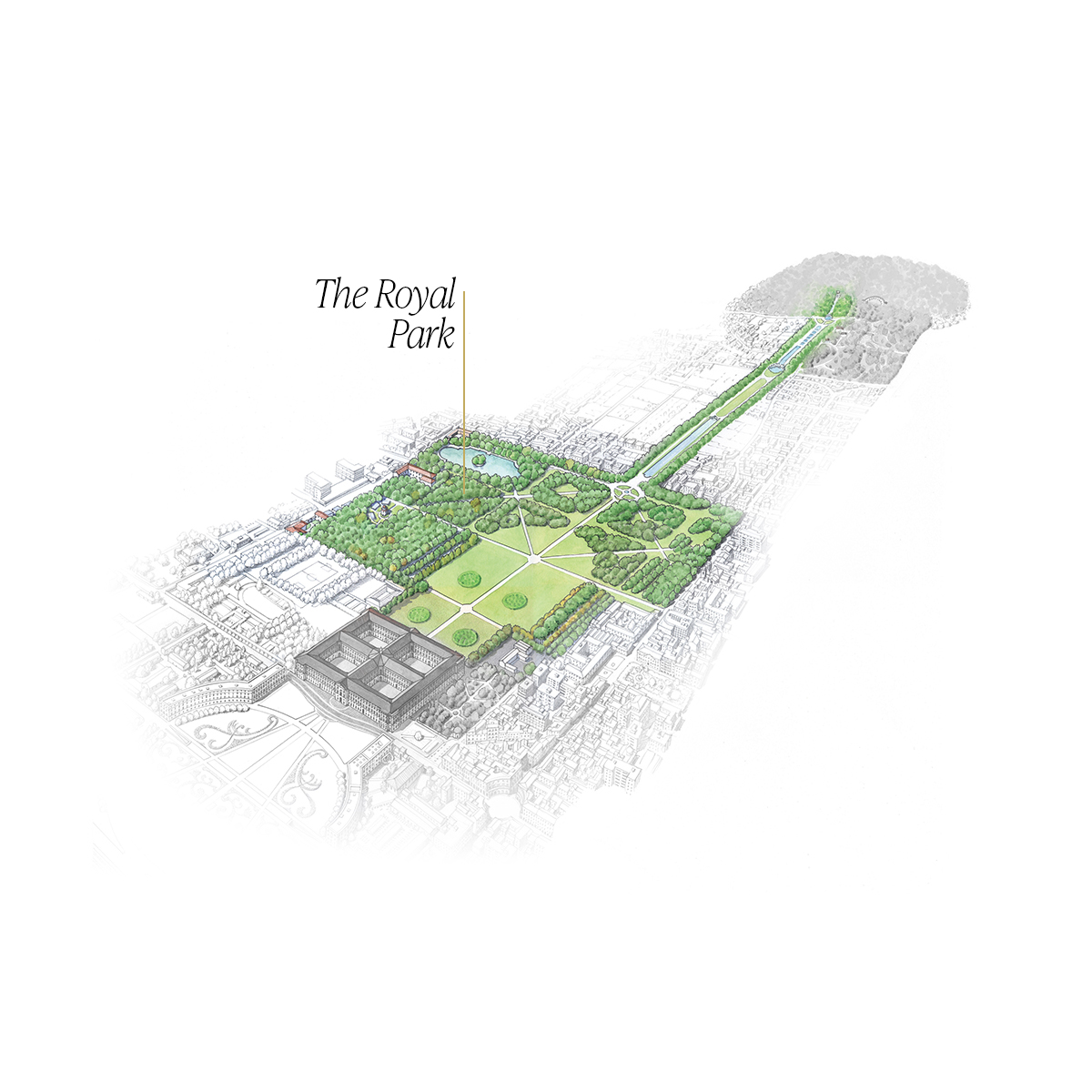
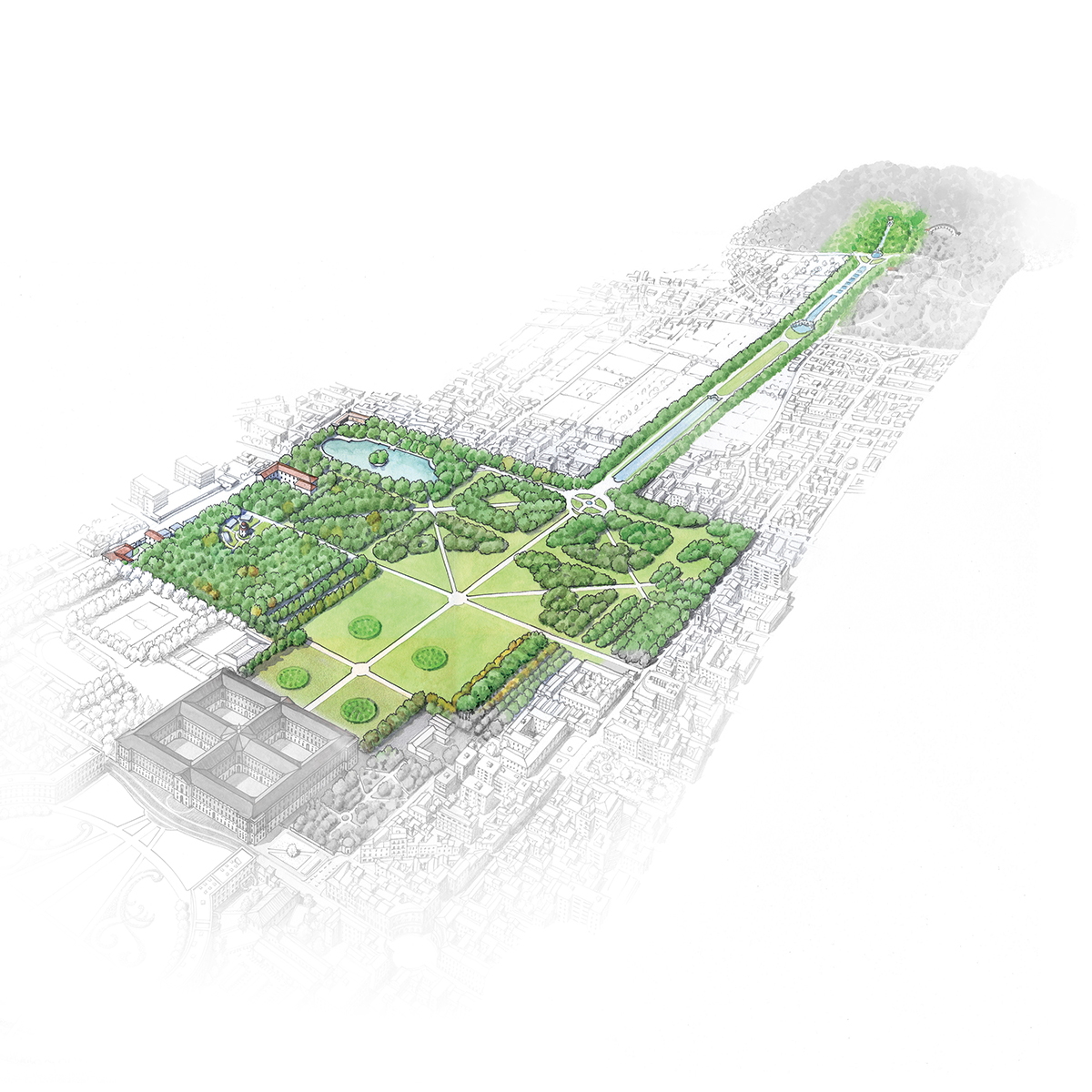
 Via d'acqua
Via d'acqua Castelluccia
Castelluccia Peschiera
Peschiera The Fountain of Dolphins
The Fountain of Dolphins The Fountain of Aeolus
The Fountain of Aeolus The Fountain of Ceres
The Fountain of Ceres The Fountain of Diana and Actaeon
The Fountain of Diana and Actaeon The Fountain of Venus and Adonis
The Fountain of Venus and Adonis The waterfall and Torrione
The waterfall and Torrione The Bosco Vecchio (Old Wood)
The Bosco Vecchio (Old Wood) The Margherita Fountain
The Margherita Fountain





